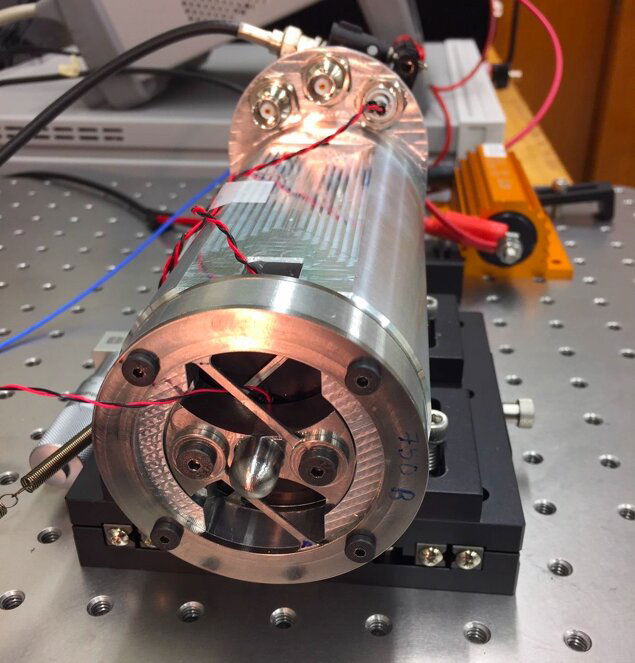
Have you ever wondered how scientists measure the forces at work during a car crash, the vibration of a bridge, or the force applied to a plane mid-flight?
It sounds complex, and in reality, it is.
While it’s simple to measure steady or static forces, like the weight of a person standing still on a scale, it’s much trickier to measure forces that keep changing – we call these dynamic forces.
However, a group of clever scientists at the National Institute of Standards and Technology (NIST) have developed a cool new device called the Kibble Dynamic Force Reference (KDFR), named after the principle it uses to generate its measurements.
So, what does this KDFR thing do?
Well, it produces waves or pulses of dynamic force.
When you measure dynamic forces, you get a lot of noise, which means there’s a lot of information in your readings that isn’t related to the force you’re trying to measure.
To get around this, the KDFR produces lots of repeated pulses to get a clear measurement.
One of the coolest things about the KDFR is that it doesn’t need to be calibrated. It’s a primary standard, meaning it works based on fundamental laws of physics.
This device can handle frequencies from a few hertz (which means cycles per second) up to several kilohertz (thousands of cycles per second), with a low margin of error of just 1%. Plus, it’s portable, so you can take it wherever you need to measure dynamic forces.
The KDFR is essentially a hollow cylinder magnet surrounded by a wire coil attached to a little thing called an armature.
When you run a current through the coil, it creates an electromagnetic force that pushes the armature forward, transferring a dynamic force to any external structure in contact with the armature.
By observing the response to this dynamic force, we can learn a lot about the properties of the structure being tested.
The KDFR is expected to be very useful in applications like testing the structures of vehicles, buildings, and bridges, and for calibrating force sensor systems used to measure dynamic forces in materials testing and wind tunnel tests.
The KDFR could even be used to figure out how much of a force a support structure can transfer to what it’s supporting, or to figure out the forces acting on an airplane in flight by measuring the strains and deformations on the aircraft surface.
Most existing methods for measuring dynamic forces rely on a calibrated force sensor and are not primary devices, meaning they need to be calibrated regularly. A common example is an “impact hammer,” which gives a single pulse of force. This is quite limited in determining system frequency responses.
Unlike these methods, the KDFR can produce a range of force output wave profiles, giving it a more comprehensive view of the force dynamics at play.
This gives us a clearer picture of the properties of structures and materials, making the KDFR a game-changer in the field of dynamic force measurement.
Follow us on Twitter for more articles about this topic.



